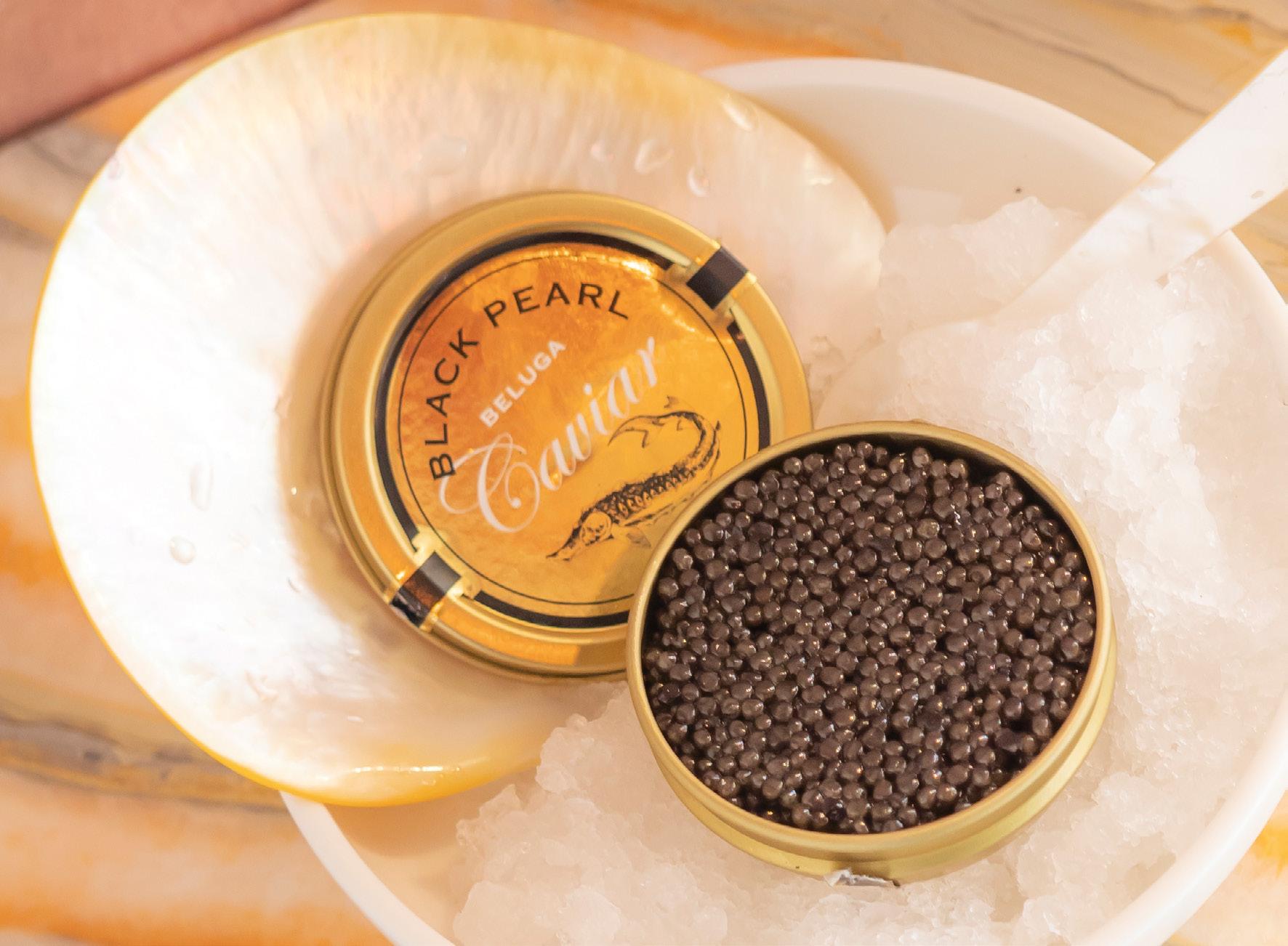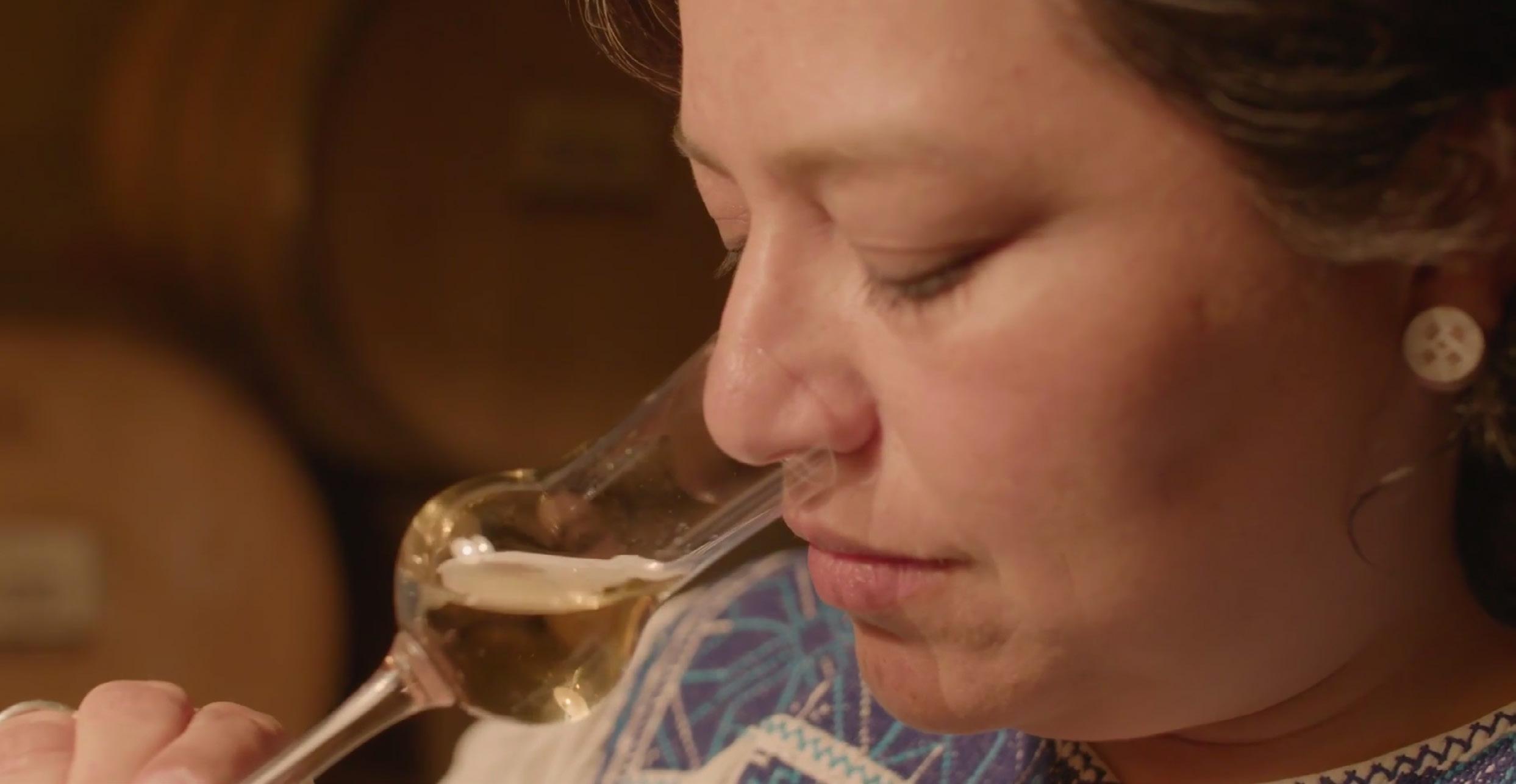
5 minute read
FEATURE // Luxury ingredients
Hey, bigspender
The dining public can’t get enough of high-end ingredients.
WORDS Annabelle Cloros
TRUFFLE SEASON TRIGGERS something in customers; perhaps it’s the aroma, the limited window of availability or the air of exclusivity linked to the fruiting body. The same allure applies to other luxury ingredients such as uni, wagyu and caviar, and operators are more than happy to cater to customers looking to treat themselves.

Hospitality talks to The Mayflower’s Kevin Ly and Devon Cafe’s Zachary Tan about the metrics of showcasing high-end products, why customers are still happy to spend up (pandemic aside) and treating premium ingredients with respect.
Devon Cafe was one of the OGs of making high-end ingredients more accessible to Sydney diners. The brand debuted the ‘ultimate toastie’ at its Surry Hills location seven years ago, and it’s become a seasonal staple at the brand’s other locations ever since. “We’ve always been at the forefront for cafés with luxury ingredients,” says Tan. “It’s as simple as trying to make posh ingredients more accessible to the public. Truffle used to be confined to fine dining restaurants, but we’ve come a long way.”

The Mayflower's truffle croque monsieur

Devon's truffle curly fries
In 2013, a truffle toastie was a unique experience, but menus have changed in line with the public’s increasing appetite for the finer things in life. The Mayflower in Sydney’s Darlinghurst has become a major attraction in just a few months thanks to its caviar service and extensive truffle menu.
But it wasn’t always like this. The former Brewristas location underwent an extensive renovation — on the interior front and the food offering. “Before the rebrand, we were an average café doing specialty coffee and food, which was comparable to our competitors,” says co-owner Kevin Ly. “We needed a point of difference and a shift altogether. Instead of going low end, we went high end. It was a big gamble, we weren’t sure if it was going to be taken well — especially during COVID-19 — but fortunately it’s been good.”
Anyone can shave truffle on a dish, but truffle is an ingredient that should be respected, with the correct application resulting in a memorable dining experience. Tan has a fine dining pedigree, having worked in the kitchen of Bistro Guillaume, and says Devon’s approach to using truffle revolves around tradition. “They’re a little bit overdone if you ask me, but they are a special ingredient in the right hands,” says Tan. “Our dishes are very classical when it comes to truffle. People still want that comfort for breakfast and lunch.”
Devon’s truffle menu has expanded over the years, with dishes including everything from a truffle egg sando to truffle lasagne and truffle mie goreng, which Tan says has become the most popular dish. Devon also uses truffle in sweet applications, including a sundae and a truffle-misu. “Truffles are not really known to be used with sweet items, but at Devon, we have always tried to use savoury and sweet to blur the lines,” he says. “We started doing the truffle sundae around five years ago where we infuse milk with truffle and make a soft serve out of it.”
The concept has also launched truffle retail products (gelato, honey) and a truffle brunch experience, priced at $69 for a minimum of two people, which covers six dishes. “People get excited and want a truffle feast every winter,” says Tan. “It’s quite popular, especially with couples who want to go on a brunch date on the weekend.”

The Mayflower recruited former Momofuku Seiobo chef Jiwan Choi to design the café’s menu, which is anchored by caviar. The venue offers dedicated truffle and caviar services (Oscietra, beluga, white sterling) along with a menu studded with high-end ingredients from wagyu and urchin to truffle. “It’s one thing to use expensive ingredients, it’s another to have a fine dining chef and use those ingredients on another level,” says Ly.
The truffle croque monsieur and lobster roll have both proven to be hits with diners alongside the caviar service. “Caviar has such a halo around it and people don’t have it unless they go to a fine dining restaurant,” says Ly. “We have it all year round and offer a tasting menu for $30 to get people into it. It’s fascinating how many people haven’t tried caviar, so it’s great to bring it to the masses and let them experience it. We’ve been getting caviar buyers every day; some people have it for a date or special occasions and others share a beluga between two for lunch.”
All the aforementioned ingredients come at a high price, which means the numbers have to be right to make them a viable option. While finances are tough for many Australians, the general consensus among industry is people are looking for some comfort in the midst of such uncertainty.

“The cost is high, but if you do the covers, it’s ok,” says Tan. “It’s about getting the numbers right. Each spend isn’t as high as a proper restaurant, therefore we need to get the quantity for it to be viable.”
Ly agrees, and says the increase of people working from home has also been beneficial for operators. “There is a need for people to get out and splurge a little bit,” he says. “There are a lot of people visiting us at the moment and we will be moving into the evenings soon, so that will give us another window of opportunity.”

Truffle egg sando, wagyu omurice and curly fries
While truffle is seasonal, both The Mayflower and Devon have new offerings in the works to take its place. Devon will swap the truffle banquet for a seafood experience which will showcase some of Australia’s finest produce. “For spring, we’re going to feature urchin, blue fin tuna and scarlet prawns,” says Tan. “We’re really going to try and catch people’s attention with the luxe brunch and some of the items will be available à la carte, too.”
The Mayflower is planning to replace truffle with a few ideas currently in the works. “We align ourselves as a luxe eatery, so we will be going down the route of what is luxurious, rare and what is expensive but delicious,” says Ly. “We can always play with fish or high-quality meats. There are always things we can align ourselves with.” ■








